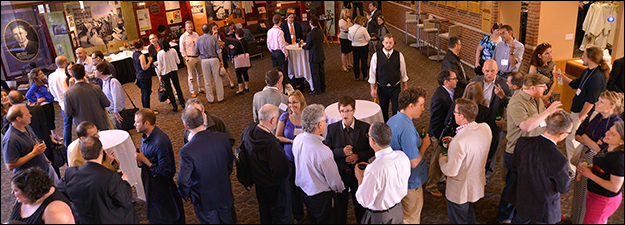Discernment and Proof: Strategies of Authentication in the Middle Ages
Sponsoring Organization(s)
Medieval Studies Workshop, Univ. of Chicago
Organizer Name
Claire Jenson, Matthew Vanderpoel
Organizer Affiliation
Univ. of Chicago, Univ. of Chicago
Presider Name
Claire Jenson, Matthew Vanderpoel
Paper Title 1
Labeling Relics and Managing Doubt in Early Medieval Gaul
Presenter 1 Name
Jake Purcell
Presenter 1 Affiliation
Columbia Univ.
Paper Title 2
Trial by Poison: Sainthood, Discernment, and Authenticity
Presenter 2 Name
Jennifer Timmons
Presenter 2 Affiliation
Univ. of Chicago
Paper Title 3
Rules of Discernment for Gold Threads in Late Medieval Paris
Presenter 3 Name
Nancy G. Feldman
Presenter 3 Affiliation
School of the Art Institute of Chicago
Start Date
16-5-2015 3:30 PM
Session Location
Schneider 2335
Description
What makes a text, an image, an object, or an idea authentic in the Middle Ages? This question forms the basis for this panel’s investigation. The pre-modern, pre-critical world exhibited a diversity of methods for classifying evidence, weighing testimony, judging truth, and drawing conclusions. We recognize debates on authenticity ranging from the genuine provenance of relics to ontological disputes on the existence of universals. Further, our own scholarly reading of documents begs theses questions, just as the medieval sources reflexively do. What strategies were deployed to write an object as genuine, true, or authentic? How do such approaches, from different spheres of the medieval world, relate to or depart from each other? What were the qualifications to pronounce such judgments of authenticity? How were these claims contested? Under what circumstances is the authentic tested, and at what points is it found to fail? We welcome proposals from all disciplines that analyze strategies of authentication, broadly construed, in the Middle Ages.
Claire E. Jenson
Discernment and Proof: Strategies of Authentication in the Middle Ages
Schneider 2335
What makes a text, an image, an object, or an idea authentic in the Middle Ages? This question forms the basis for this panel’s investigation. The pre-modern, pre-critical world exhibited a diversity of methods for classifying evidence, weighing testimony, judging truth, and drawing conclusions. We recognize debates on authenticity ranging from the genuine provenance of relics to ontological disputes on the existence of universals. Further, our own scholarly reading of documents begs theses questions, just as the medieval sources reflexively do. What strategies were deployed to write an object as genuine, true, or authentic? How do such approaches, from different spheres of the medieval world, relate to or depart from each other? What were the qualifications to pronounce such judgments of authenticity? How were these claims contested? Under what circumstances is the authentic tested, and at what points is it found to fail? We welcome proposals from all disciplines that analyze strategies of authentication, broadly construed, in the Middle Ages.
Claire E. Jenson

